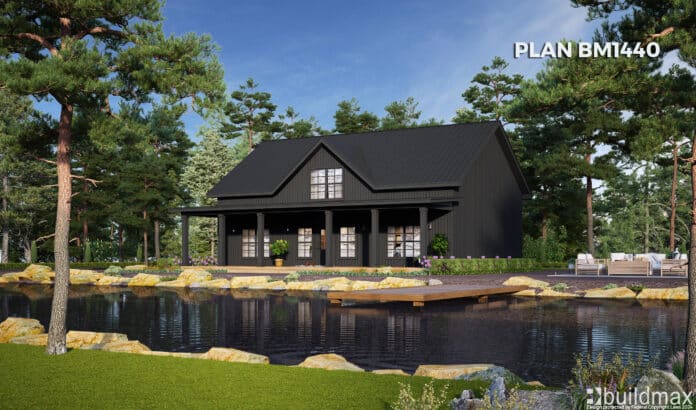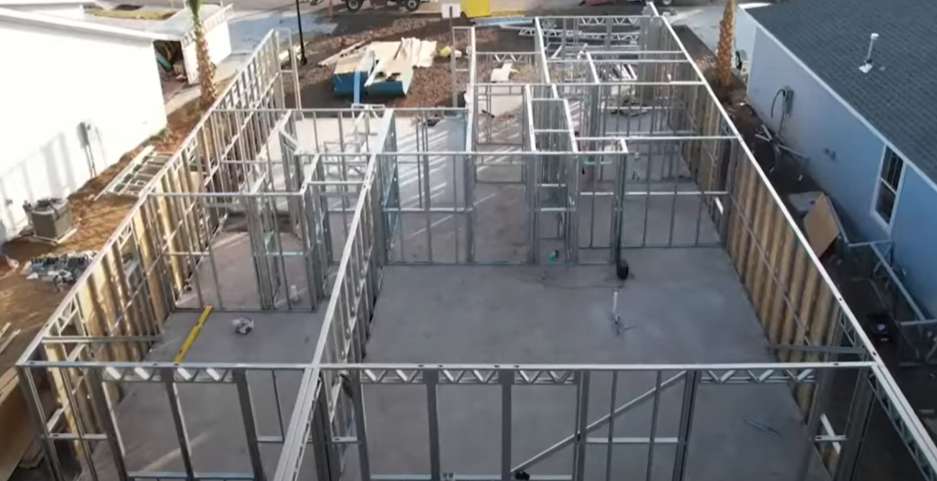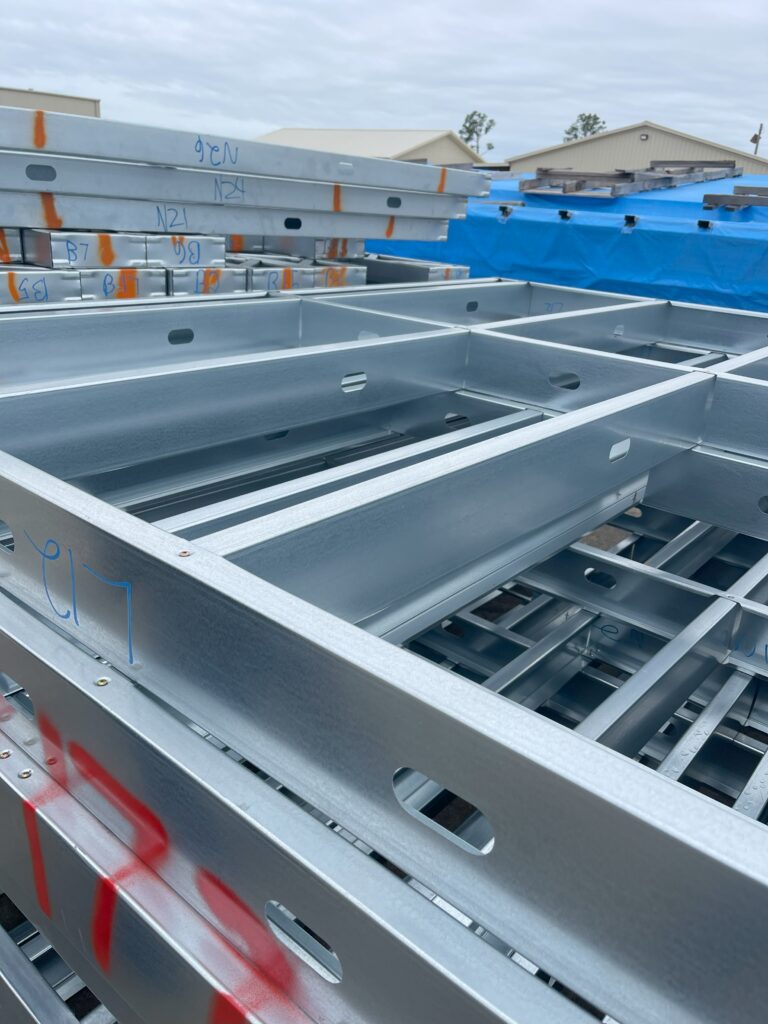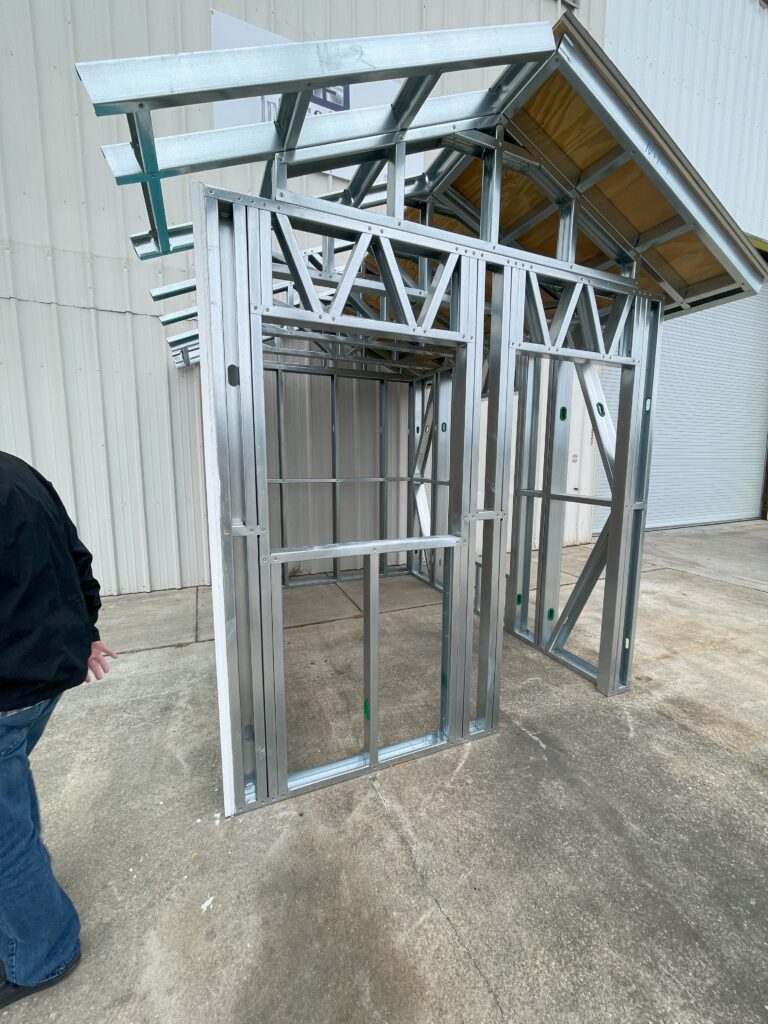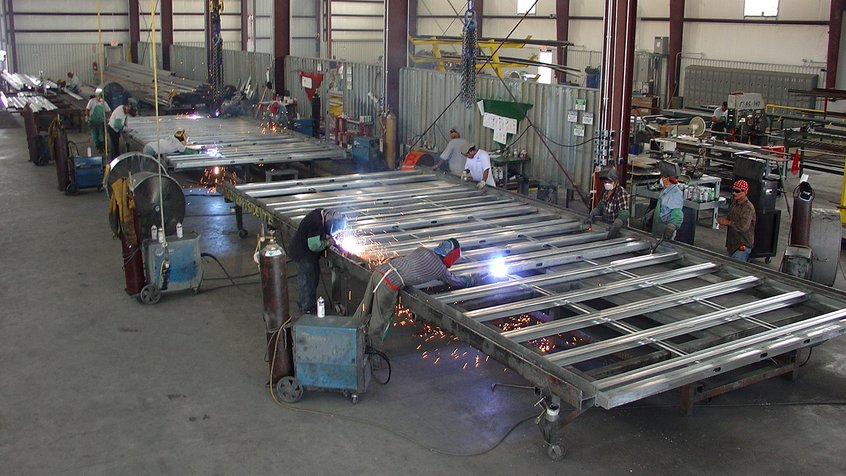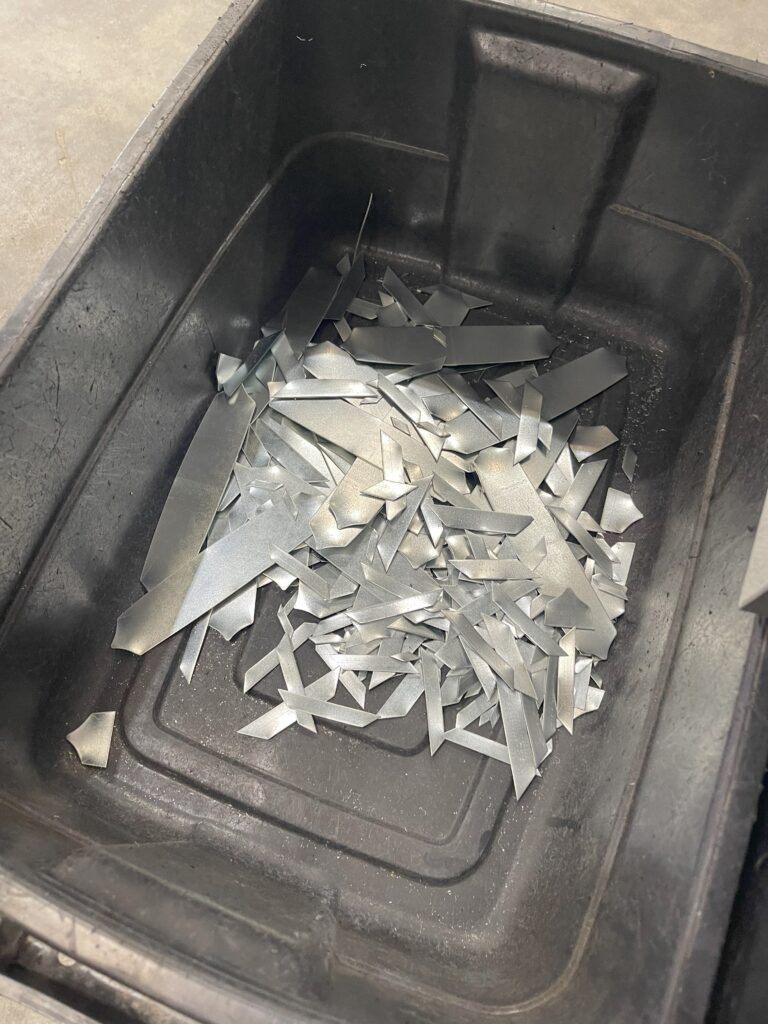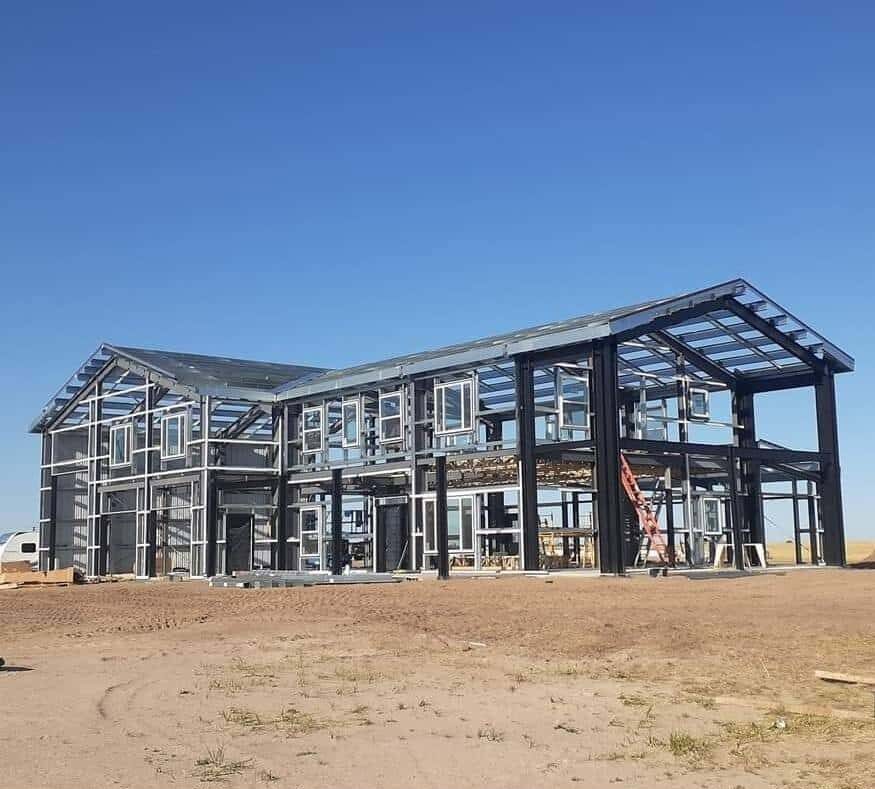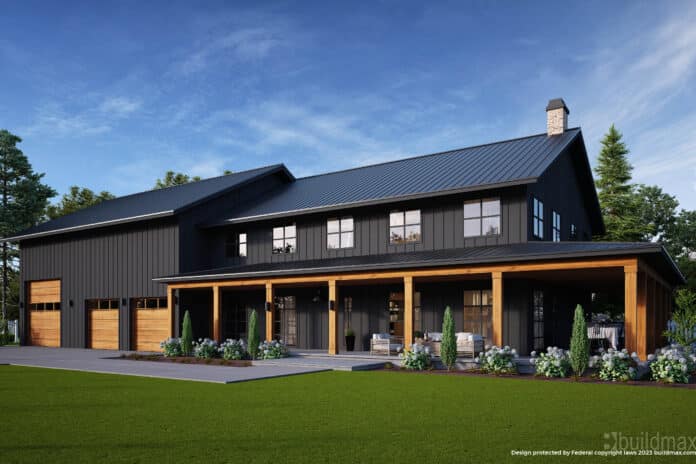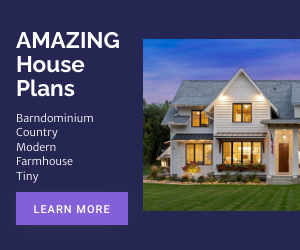**How Thick Are Barndominium Interior Walls? Making sense of Steel Frame Barndominiums**
Barndominiums have become increasingly popular as a unique blend of style, comfort, and durability. One of the common questions that comes up when planning or building a barndominium is: “How thick are the interior walls?” The thickness of interior walls can vary depending on the materials used and the design choices made. When it comes to steel frame barndominiums, the wall thickness can differ from that of traditional wood-framed homes. Steel framing offers superior strength and longevity, and it also presents a more sustainable building option with less material waste. Let’s explore these aspects in detail.
How Thick Are Interior Walls in a Steel Frame Barndominium?
In traditional wood-framed homes, interior walls are typically framed with 2×4 lumber, which results in a wall thickness of about 4.5 inches once drywall is added to both sides (each side adding about half an inch). However, when it comes to steel frame barndominiums, the wall thickness can be slightly different due to the nature of steel framing and insulation requirements.
1. **Steel Stud Sizes and Wall Thickness**
Steel frame barndominiums often use steel studs for framing the interior walls. The most commonly used steel stud sizes are 2×4 inches and 2×6 inches, similar to their wooden counterparts. When using a 2×4 steel stud, the wall thickness ends up being around 4 to 4.5 inches after adding drywall on both sides, which aligns closely with the thickness of wood-framed walls. For walls framed with 2×6 steel studs, the thickness can be around 6 to 6.5 inches, depending on the drywall and any additional materials like soundproofing or insulation.
2. **Insulation and Additional Considerations**
Steel frame walls typically have a cavity that can accommodate insulation, just like wooden frames. The insulation thickness is a critical factor that can slightly affect the final wall thickness. Insulation not only plays a role in energy efficiency but also in soundproofing. Thicker insulation can be used in steel-framed walls without significantly increasing the wall thickness, thanks to the strength and stability of steel studs.
3. **Variations Based on Design Needs**
While the typical thickness of a steel frame barndominium interior wall is similar to that of a traditional home, steel’s versatility allows for variations based on specific design needs. Thicker walls may be used in areas where extra soundproofing is desired, such as between bedrooms or around home offices, or where additional structural support is needed.
The Benefits of Steel Framing: Superior Strength and Longevity
Building a barndominium with steel framing offers several advantages over traditional wood framing, not only in terms of strength and durability but also in efficiency and environmental impact.
1. **Superior Strength**
Steel is known for its strength and stability. Unlike wood, which can warp, crack, or shrink over time, steel remains rigid and robust. This strength means that steel frame barndominiums can support larger open spaces and heavier loads without the need for interior load-bearing walls. As a result, you have more flexibility in designing the interior layout without compromising the structural integrity of the home.
2. **Longevity and Resistance to Environmental Factors**
Steel frame barndominiums are built to last. Steel is resistant to common issues like rot, mold, and pest infestations, such as termites, which can cause severe damage to wood-framed structures. This resistance to environmental factors means that a steel frame barndominium can maintain its structural integrity for decades with minimal maintenance, which translates to long-term savings and increased property value.
Less Material Waste and Reduced Environmental Impact
Another significant benefit of steel framing is its efficiency in terms of material usage and environmental impact. When building with steel, there is generally less material waste compared to wood framing. Here’s why:
1. **Precision and Reduced Waste**
Steel framing is often pre-engineered and cut to precise measurements, which minimizes on-site waste. Unlike wood, which often needs to be cut and adjusted on-site (leading to off-cuts and wastage), steel components are manufactured to exact specifications. This precision means fewer leftover materials and less waste going to landfills.
2. **Recyclability of Steel**
Steel is one of the most recyclable materials available. Any leftover steel from the construction process can be recycled and repurposed, further reducing the environmental footprint of your barndominium build. In contrast, wood waste is not always recyclable, especially when treated with chemicals.
3. **Energy Efficiency Benefits**
Steel frame barndominiums can also be more energy-efficient. Because steel allows for more precise construction, there are fewer gaps and inconsistencies in the building envelope, reducing drafts and heat loss. This energy efficiency contributes to lower heating and cooling costs, which is not only cost-effective for the homeowner but also more sustainable for the environment.
Why Choose Steel Frame for Your Barndominium?
Building a steel frame barndominium is not just about aesthetics or trendiness; it’s about making a sound investment that pays off in strength, longevity, and sustainability. Here are some key reasons why steel framing is an excellent choice:
– **Durable and Long-Lasting**: Steel structures withstand the test of time better than wood, providing a home that can last for generations.
– **Cost Savings Over Time**: While the initial cost of steel framing might be comparable to or slightly higher than wood, the savings in maintenance, repairs, and energy efficiency make it a worthwhile investment.
– **Environmentally Friendly**: With less material waste during construction and the recyclability of steel, you’re making a greener choice for the planet.
– **Flexibility in Design**: Steel allows for open floor plans and easy modifications, giving you more options for customizing your barndominium according to your needs.
Conclusion: Optimal Wall Thickness with Maximum Benefits
When it comes to the thickness of interior walls in a steel frame barndominium, they are generally similar to those in traditional homes, with typical thicknesses ranging from 4 to 6.5 inches, depending on the stud size and insulation used. However, the benefits of building with steel—superior strength, longevity, reduced waste, and sustainability—extend far beyond mere measurements.
Choosing to build a steel frame barndominium is an investment in durability, cost efficiency, and environmental stewardship. It’s a choice that not only provides a strong and lasting home but also leaves a smaller footprint on our planet, making it a smart decision for today and for the future.



